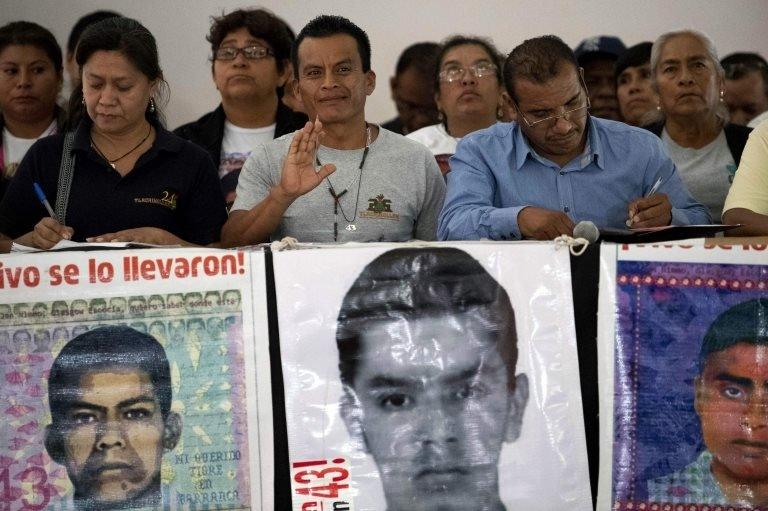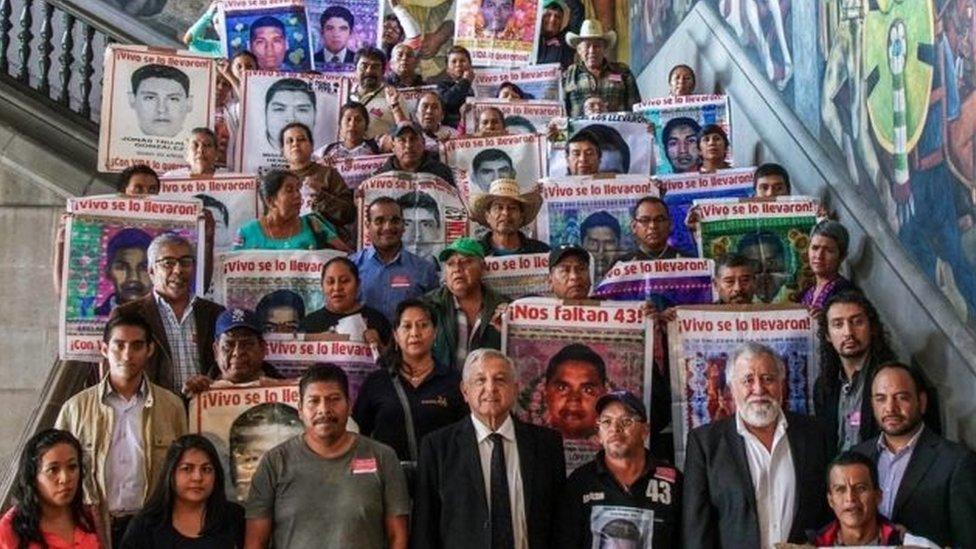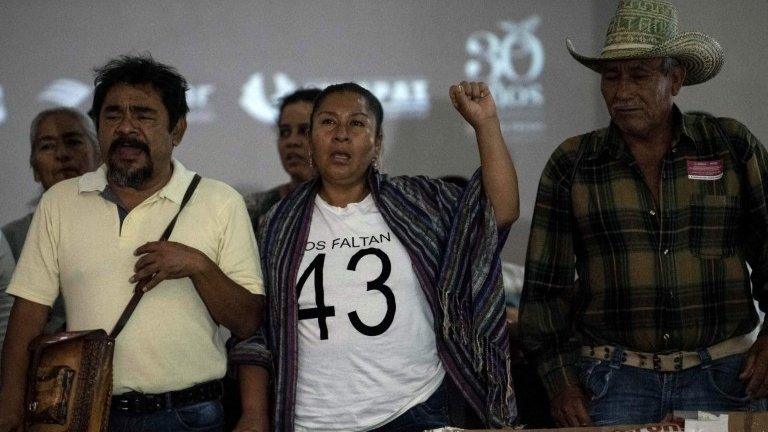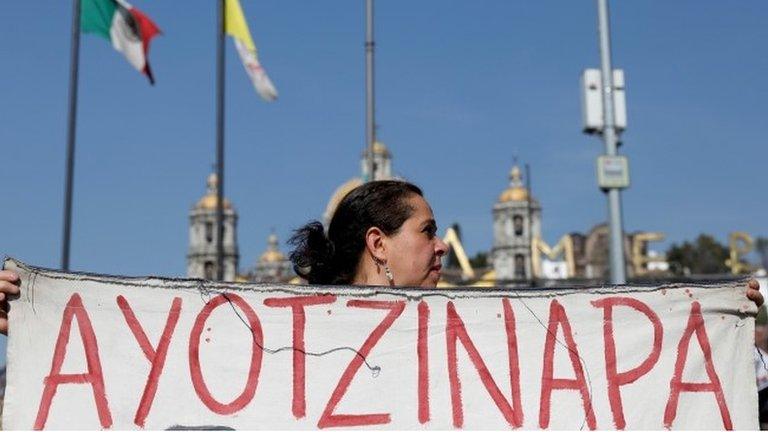Mexico missing students: New investigation ordered
- Published

The parents of the missing 43 have not given up their search
Mexico will open a new investigation into the 2014 disappearance of 43 trainee teachers in Guerrero state.
The attorney-general's office said it would reinvestigate "almost from scratch" what happened to the 43 after they clashed with local police on 26 September 2014.
The case and the subsequent bungled investigation caused outrage in Mexico.
Mexican President Andrés Manuel López Obrador said it was "an open wound" for Mexico.
What did the president say?
Opening a fresh investigation into the disappearance of the students from the teacher training college in Ayotzinapa was a key campaign pledge by Mr López Obrador.

The parents have met President Andrés Manuel López Obrador on a number of occasions
On Wednesday, 10 months into his presidency, he told the parents of the disappeared there would be completely new probe.
"This is about justice, about humanism and also about Mexico's reputation," he said.
What is the case about?
The case dates back to 26 September 2014 when 43 students from a teacher training college in the town of Ayotzinapa in Guerrero state disappeared after attending a protest in the nearby town of Iguala.
They were part of a larger group and, as they were travelling back from Iguala to Ayotzinapa, they were confronted by municipal police who opened fire on the buses they were travelling in.
The officers maintained they had done so because the buses had been hijacked, while the surviving students said the drivers had agreed to give them a lift.
During the clash, five people - two of them students - were shot dead. The body of a third student was found mutilated near the scene of the clash the next morning.
Forty-three of the students vanished after the clash.
What did the original investigation uncover?
An official government report published during the presidency of Enrique Peña Nieto said the students had been seized by the municipal police officers who handed them over to a local drugs gang.
The report concluded that the drugs gang had killed the 43, burned their bodies and dumped the ashes in a local stream.
Why were the findings questioned?
As early as 2015, independent investigators from the Inter-American Commission of Human Rights warned that the official investigation was "deeply flawed".
They said that satellite images showed there had been no fire on the night of the students' disappearance.
They also said that because the chain of evidence had been broken, it was not clear whether the charred remains of the only student to be positively identified were found at the rubbish dump or planted there.
Argentine forensic experts also concluded that there was no biological or physical evidence to indicate that the bodies of the 43 had been burned at the rubbish dump.
Moreover, human rights groups say that some of the suspects were tortured into confessing.
Earlier this month, a key suspect in the case - a leader of the Guerreros Unidos gang - was freed because he had been tortured in detention.
Earlier this week, the attorney-general's office said it would investigate officials who had handled the original probe so that those "who had failed in their duties" could be held accountable.

You may also be interested in watching:
How Mexican self-defence groups are mobilising against criminal gangs
- Published16 September 2019

- Published12 April 2019

- Published13 March 2018
